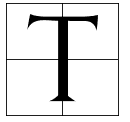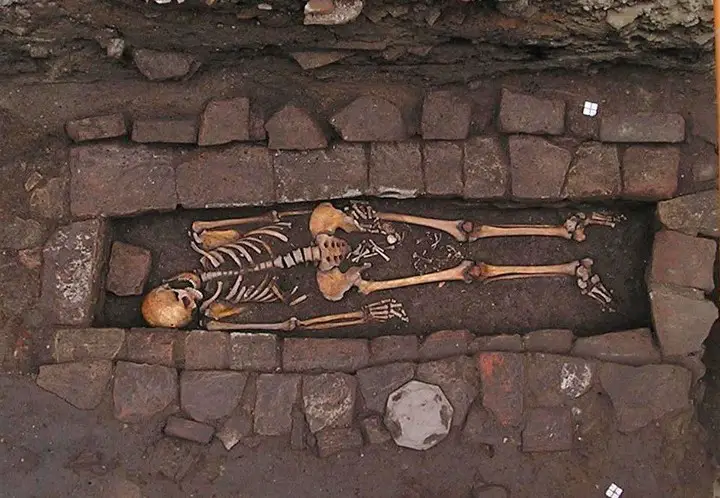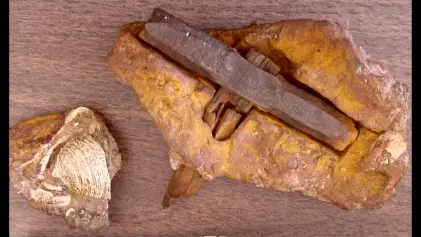 here are many stories within history that are considered gems due to their uniqueness and curios incidents, but many of them sadly have no hard evidence to prove their validity. It is rare that we find interesting stories buried under dirt that had been piled for over 2000 years. This grave had been discovered in 2018 by archeologists within Bologna, Italy. Based on their examination, the grave is from the early Medieval era, somewhere around the 7th century. It is nothing out of the ordinary to find a buried skeleton in good condition after 1000 years, but what was strange for the archeologists was the small bones found within the grave, representing the size of a newborn baby.
here are many stories within history that are considered gems due to their uniqueness and curios incidents, but many of them sadly have no hard evidence to prove their validity. It is rare that we find interesting stories buried under dirt that had been piled for over 2000 years. This grave had been discovered in 2018 by archeologists within Bologna, Italy. Based on their examination, the grave is from the early Medieval era, somewhere around the 7th century. It is nothing out of the ordinary to find a buried skeleton in good condition after 1000 years, but what was strange for the archeologists was the small bones found within the grave, representing the size of a newborn baby.
A world’s first
This is where it caught the attention of World Neurosurgery and its experts. A team of experts within the Wolrd of Neurosurgery made up of Alba Pasini, Vanessa Smamantha Manzon, Xabier Gonzalez-Muro, and Emanuela Gualdi-Russo have carefully analyzed the case and the possibility for a dead female to give birth whilst under the circumstances of being buried.
The experts mentioned above have published a paper, describing the phenomenon from a medical perspective and the possibilities as well as the implications that could have lead to such an event. I have digested and simplified their most important findings below.
Taking into consideration the possible date of this corpse, it is very likely that this woman was buried straight in the ground with no coffin or something else to protect the corpse from the dirt. Based on medical historical archives, this is the first case of a baby being born in a grave.
A dead pregnant woman giving birth isn’t something out of the ordinary in the medical world as it can happen. The body of a pregnant female lady is biologically programmed to save the baby’s life, just as the most important process in humanity is passing down the genes and evolving. Even if the mother is dead, the body will push the baby out 48 to 72 hours after the death of the pregnant mother. The medical name for this phenomenon is “postmortem fetal extrusion”.

The term “Coffin Birth” is associated with postmortem fetal extrusion and it is used as a nickname for the medical term. The gases within the mother’s body build up after her death and in order to escape they will shot out the fetus. Looking at the bones of the fetus, it seems that the baby was close to being born at the right time (near 9 months) but it is quite difficult for the experts to precisely say the age of the fetus.
It is also important to mention the way that the bones of the fetus are scattered, presumingly they have been moved by insects within the grave that may have eaten the decaying flesh. Gynecologist Jen Gunter from San Fransisco tried to explain why the fetus was still given birth even after the mother had passed away 10 days beforehand. His theory is that somehow the uterus had ruptured, pushing the fetus out.
Now, it is very difficult to prove if the fetus was dead once it had been given birth or if it was still alive. As the experts say, if the fetus is well developed enough (near the 9 months period) it has a chance to survive inside for a short period of time even if the mother had passed away. I do not even want to imagine what the baby had to go through if it was still alive.
Death of the mother

Another interesting aspect to mention is the crack on the pregnant woman’s skull representing what could possibly be the cause of death. Based on the age of the corpse it is difficult to mention what could have been the cause of death, but from a more logical medical perspective, the experts think it may have been from trepanation. Trepanning was a cure from the early medieval era used to cure headaches and other sorts of problems around the skull. This cure was boring holes into the skull of a person in order to relieve the pressure of the brain.
The medical problem that was most persistent at the time within pregnant women which recommends trepanation as a cure was Eclampsia or severe preeclampsia ( high blood pressure within pregnant women). However, once again it must be mentioned that such lesions even if they may look like a surgical procedure, could be from assault.
Nevertheless, this is a very interesting case and its rarity just shows the possibility of other things to have occurred in history. All it takes is us digging up such stories and with the help of experts and technology understanding how and why such events took place.
Avid Writer with invaluable knowledge of Humanity!
Upcoming historian with over 30 million views online.
“You make your own life.”





